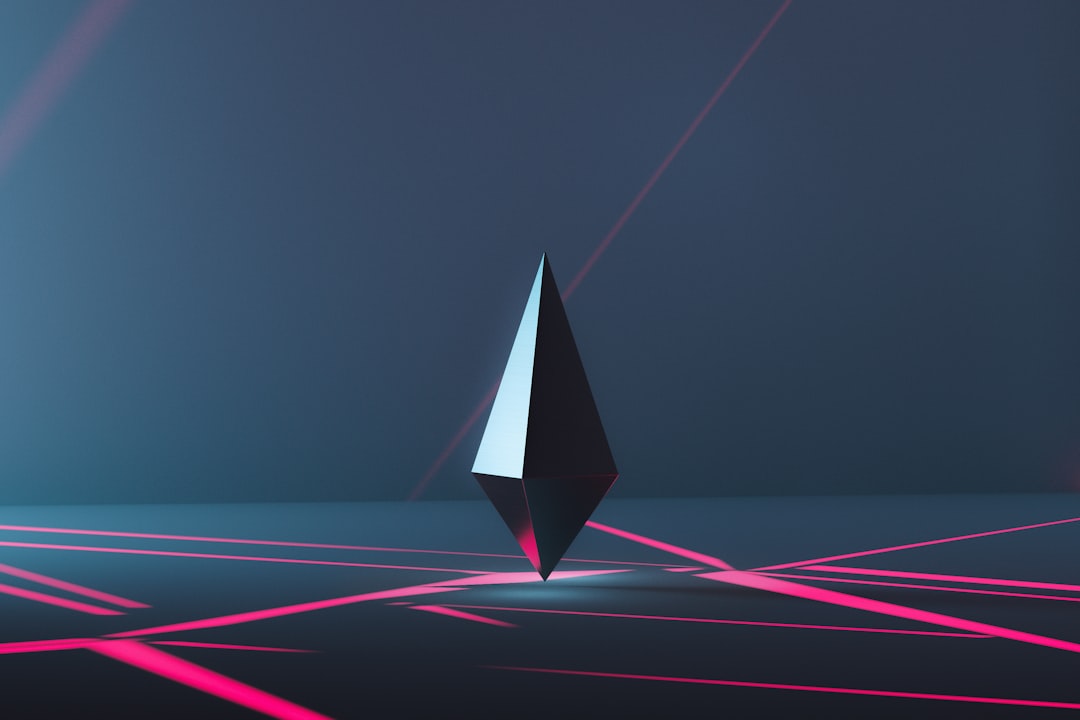Are you curious about NFTs? If you’re like most people, terms like “smart contracts”, “tokenization”, and “blockchain technology” might sound intimidating. But don’t worry, we’re here to break it down for you!
NFTs, or Non-Fungible Tokens, have been gaining popularity in recent years as a way to monetize and collect unique digital assets. But what exactly are they?
Let’s start with a brief history. NFTs were first introduced in 2017 with the launch of CryptoKitties, a game that allowed users to buy, sell, and breed unique virtual cats using blockchain technology. Since then, NFTs have expanded beyond just digital collectibles and into the art world, virtual real estate, and even sports.
So, what exactly are NFTs? In simple terms, they are unique digital assets that are verified on a blockchain, providing proof of ownership and authenticity. Unlike cryptocurrencies like Bitcoin or Ethereum, which are interchangeable and have the same value, NFTs are one-of-a-kind and cannot be exchanged for something else.
Now that we have a basic understanding of what NFTs are, let’s dive deeper into how they work and some of the different types of NFTs available.
What are NFTs?
NFTs, or non-fungible tokens, are digital assets that are unique and cannot be replicated. These assets can represent anything from digital artwork to virtual real estate to tweets. Unlike cryptocurrencies such as Bitcoin, NFTs are not interchangeable, meaning that each one is unique and has its own value. This is because NFTs are based on blockchain technology, where each asset is verified and recorded on a decentralized digital ledger.
So, what sets NFTs apart from cryptocurrencies? While both use blockchain technology, cryptocurrencies like Bitcoin are fungible, meaning that each unit is interchangeable with any other unit of the same value. For example, one Bitcoin is equal to any other Bitcoin. However, with NFTs, each asset is unique and cannot be exchanged for another. This makes NFTs a powerful tool for creators and collectors, as they can truly own and authenticate their digital assets.
To understand how NFTs work, we need to dive into the world of blockchain technology. Each NFT is created using a smart contract, which is a self-executing code that runs on the blockchain. This contract specifies the details of the asset, such as its name, description, and ownership information. Once the NFT is created, it is tokenized, or turned into a digital token that can be bought, sold, and traded on various marketplaces.
Overall, NFTs represent a new frontier in the world of digital ownership and authenticity. As more creators and collectors embrace this technology, we can expect to see even more exciting use cases and opportunities for innovation. Whether you’re a digital artist, a sports fan, or just curious about the future of blockchain technology, NFTs are definitely worth exploring.
As more creators and collectors embrace this technology, we can expect to see even more exciting use cases and opportunities for innovation.
How do NFTs work?
In order to understand how NFTs work, it’s important to have a basic understanding of blockchain technology. At its core, blockchain is a decentralized digital ledger that records transactions in a secure and transparent way. Every participant in a blockchain network has a copy of the ledger, which is constantly being updated with new transactions.
Smart contracts are another key component of NFTs. These are self-executing contracts with the terms of the agreement between buyer and seller being directly written into lines of code. Once the conditions of the contract are met, the contract is automatically executed.
Tokenization is the process of turning a physical or digital asset into a digital token that can be bought, sold, or traded. In the case of NFTs, tokenization allows for unique digital assets to be verified and authenticated on the blockchain.
So, how do these three elements come together to create an NFT? Essentially, an artist or creator will use a blockchain platform to create a unique digital asset, such as a piece of artwork or a collectible. This asset is then tokenized and sold as an NFT through a smart contract on the blockchain. Once the NFT is sold, the ownership of the digital asset is transferred to the buyer, who now has a verified and authenticated digital asset that they can buy, sell, or trade as they please.
One of the key benefits of NFTs is that they provide a way for creators to monetize their digital content in a way that was not possible before. By creating a unique and authenticated digital asset, they can sell it to collectors who are willing to pay a premium for the ownership of that asset. Additionally, NFTs can be used to prove ownership of digital assets, such as music, that might otherwise be pirated or illegally distributed.
However, there are also some potential drawbacks to NFTs. One concern is the environmental impact of blockchain networks, which require a significant amount of energy to maintain. Additionally, some critics argue that the hype around NFTs is simply a bubble that will eventually burst, leaving many collectors with worthless digital assets.
Despite these concerns, NFTs have already made a significant impact in popular culture, with artists, musicians, and athletes all embracing the technology. In the next section, we’ll dive deeper into some specific examples of NFTs in popular culture.
In the case of NFTs, tokenization allows for unique digital assets to be verified and authenticated on the blockchain.
Types of NFTs
Now that we have a basic understanding of what NFTs are and how they work, let’s dive into the different types of NFTs that exist. NFTs can represent various unique digital assets, such as artwork, collectibles, virtual real estate, and more.
Firstly, let’s talk about artwork. NFTs have revolutionized the art world by providing a new way for artists to sell their digital art. With NFTs, artists can authenticate and sell their digital art as one-of-a-kind pieces, which was not possible before. NFTs have also opened up new opportunities for digital artists to monetize their work and connect with a global audience.
Next, we have collectibles. NFTs have breathed new life into the world of collectibles. With NFTs, collectors can own unique and verified digital assets that cannot be replicated. Collectibles can range from virtual trading cards to rare virtual items in games.
Virtual real estate is another exciting use case for NFTs. NFTs can represent ownership of virtual land or property in metaverse worlds. This opens up endless possibilities for developers who want to build virtual experiences and enables people to own a piece of the virtual world.
Finally, we have other unique digital assets. NFTs can represent anything that is unique and digital, such as virtual pets, music, and even tweets. The possibilities are endless, and we are only scratching the surface of what is possible with NFTs.
It’s worth noting that the world of NFTs is still in its infancy, and we are likely to see more types of NFTs arise in the coming years. As more people adopt NFTs, we will see an explosion of creativity and innovation in this space.
So, there you have it – the different types of NFTs. It’s an exciting time to be a part of this digital revolution, and we cannot wait to see what the future holds. In the next section, we’ll dive into the benefits and drawbacks of NFTs.
NFTs can represent anything that is unique and digital, such as virtual pets, music, and even tweets.
Benefits and drawbacks of NFTs
NFTs have gained immense popularity in the digital world, particularly among artists, musicians, and collectors. They offer a range of benefits and drawbacks that are worth exploring.
One of the biggest advantages of NFTs is that they allow creators to monetize their digital content. Previously, artists and musicians had no way of selling their work as a unique asset, and were often forced to rely on selling prints or merchandise. With NFTs, creators can sell their digital creations as unique assets that cannot be replicated, providing a new revenue stream.
On the other hand, there are also some concerns about the environmental impact of NFTs. The process of creating an NFT involves a significant amount of energy consumption, which has raised concerns about the carbon footprint of the technology. However, there are efforts underway to make the process more sustainable, such as through the use of renewable energy sources.
Another benefit of NFTs is that they provide a way for collectors to own digital assets in the same way that they own physical assets. This has led to a surge in interest in collecting digital artwork, music, and other unique digital assets. NFTs also provide a way for collectors to prove the authenticity and ownership of their assets, which can be crucial for high-value items.
There are also drawbacks to NFTs, such as the potential for fraud and scams. As with any emerging technology, there are risks involved in investing in NFTs, and buyers should be cautious about who they purchase from and how they store their assets.
Despite these concerns, NFTs have the potential to revolutionize the way we think about digital content and ownership. They offer a new way for creators to monetize their work, and for collectors to own unique digital assets. As the technology continues to evolve, it will be fascinating to see how it continues to shape the digital landscape.
They offer a new way for creators to monetize their work, and for collectors to own unique digital assets.
NFTs in Popular Culture: The Intersection of Art and Technology
As NFTs continue to gain popularity and momentum, we are seeing more and more examples of their integration into popular culture, particularly in the realms of music, sports, and gaming.
In the music industry, artists are finding new and innovative ways to monetize their work through the creation and sale of NFTs. For example, Kings of Leon recently released their new album as an NFT, allowing fans to not only own a piece of the band’s music, but also unique artwork and other exclusive content. Similarly, DJ 3LAU sold over $11 million worth of NFTs to his fans, which included access to previously unreleased music and one-of-a-kind experiences.
In the sports world, NFTs are revolutionizing the way fans can engage with their favorite athletes and teams. NBA Top Shot, for instance, is a blockchain-based platform that allows users to collect and trade officially licensed NBA highlights as NFTs. Fans can purchase a “moment” of their favorite player’s highlight reel, which comes with a unique serial number and is verified on the blockchain. This creates an entirely new market for sports memorabilia and opens up opportunities for fans to own a piece of history.
Gaming is also seeing a surge in the use of NFTs, particularly in the realm of virtual real estate. Decentraland, for example, is a blockchain-based virtual world where users can purchase and develop land as NFTs, creating a unique and immersive gaming experience. Other games, such as Axie Infinity, allow players to own and trade in-game assets as NFTs, creating a true economy within the game.
The implications of NFTs in popular culture go far beyond just these examples. As more and more industries begin to explore the possibilities of NFTs, we are sure to see even more innovation and disruption. From film to fashion, the potential for NFTs is truly limitless.
While NFTs certainly have their benefits, such as the ability for creators to monetize their work and collectors to own unique and valuable assets, there are also valid concerns about their environmental impact. The energy required to power the blockchain and complete transactions can be significant, and it is important to consider the environmental cost of this technology.
Overall, NFTs represent a fascinating intersection of art and technology, and their impact on popular culture is only just beginning to be realized. As the world continues to evolve and change, it will be exciting to see how NFTs continue to shape and disrupt our understanding of ownership and value.
Gaming is also seeing a surge in the use of NFTs, particularly in the realm of virtual real estate.
Conclusion
In conclusion, NFTs have revolutionized the way we view and value digital assets. With the rise of blockchain technology and smart contracts, creators and collectors alike can now benefit from the unique properties of NFTs. From artwork to virtual real estate, NFTs have created new opportunities for artists, gamers, and sports personalities to monetize their work and build their brand.
However, it’s important to note that there are also concerns about the environmental impact of NFTs. The energy consumption required to create and trade NFTs is a valid issue that needs to be addressed in the future. Despite these concerns, it’s clear that NFTs are here to stay and will continue to shape the future of digital asset ownership and trading.
It’s exciting to think about the endless possibilities that NFTs could unlock in the future. Perhaps we’ll see new forms of digital assets emerge, or even new industries built entirely around NFTs. Only time will tell, but one thing is for sure – the future of NFTs is bright and full of potential.
So, whether you’re a creator looking to monetize your work or a collector looking to invest in unique digital assets, NFTs offer a new and exciting avenue to explore. Let’s continue to embrace this technology and see where it takes us.





